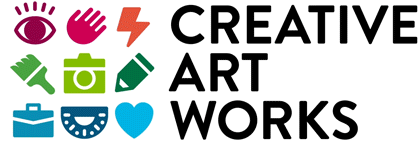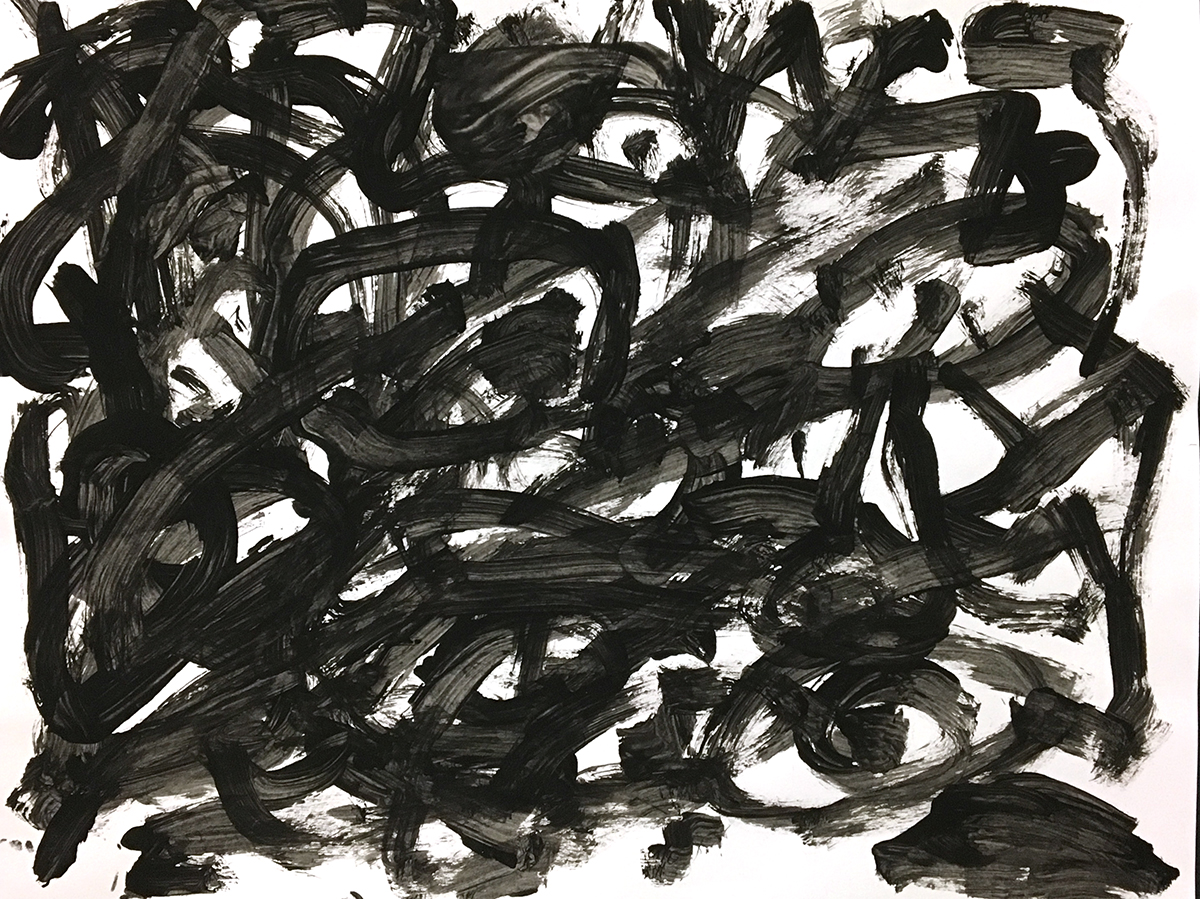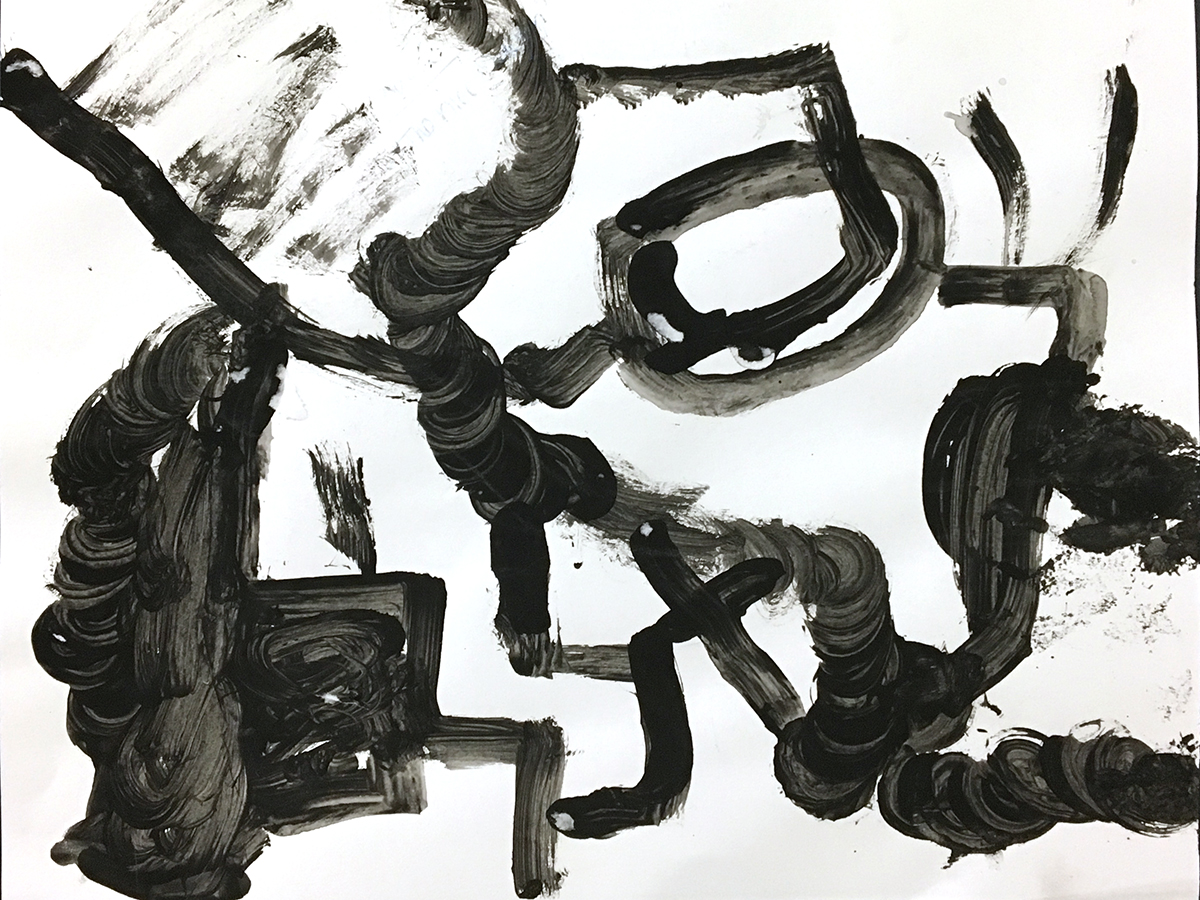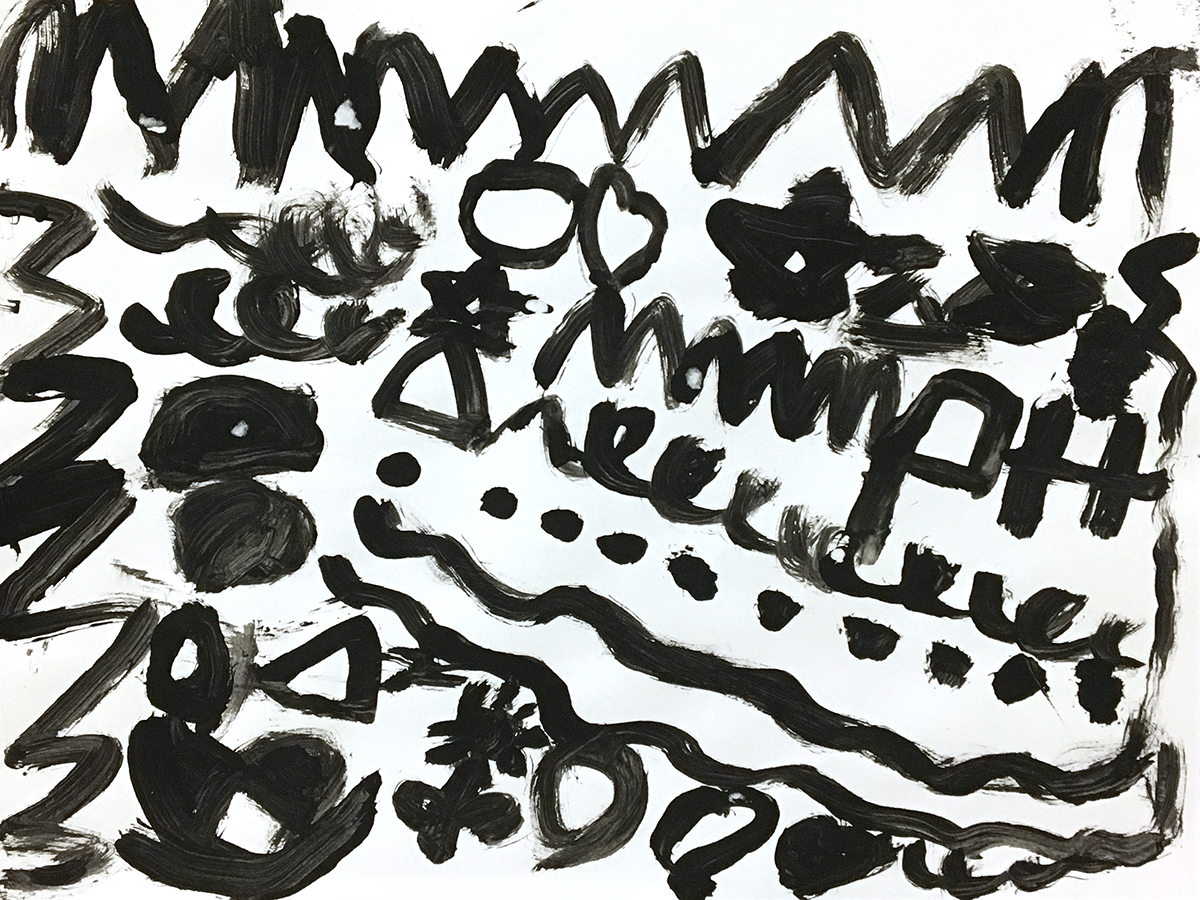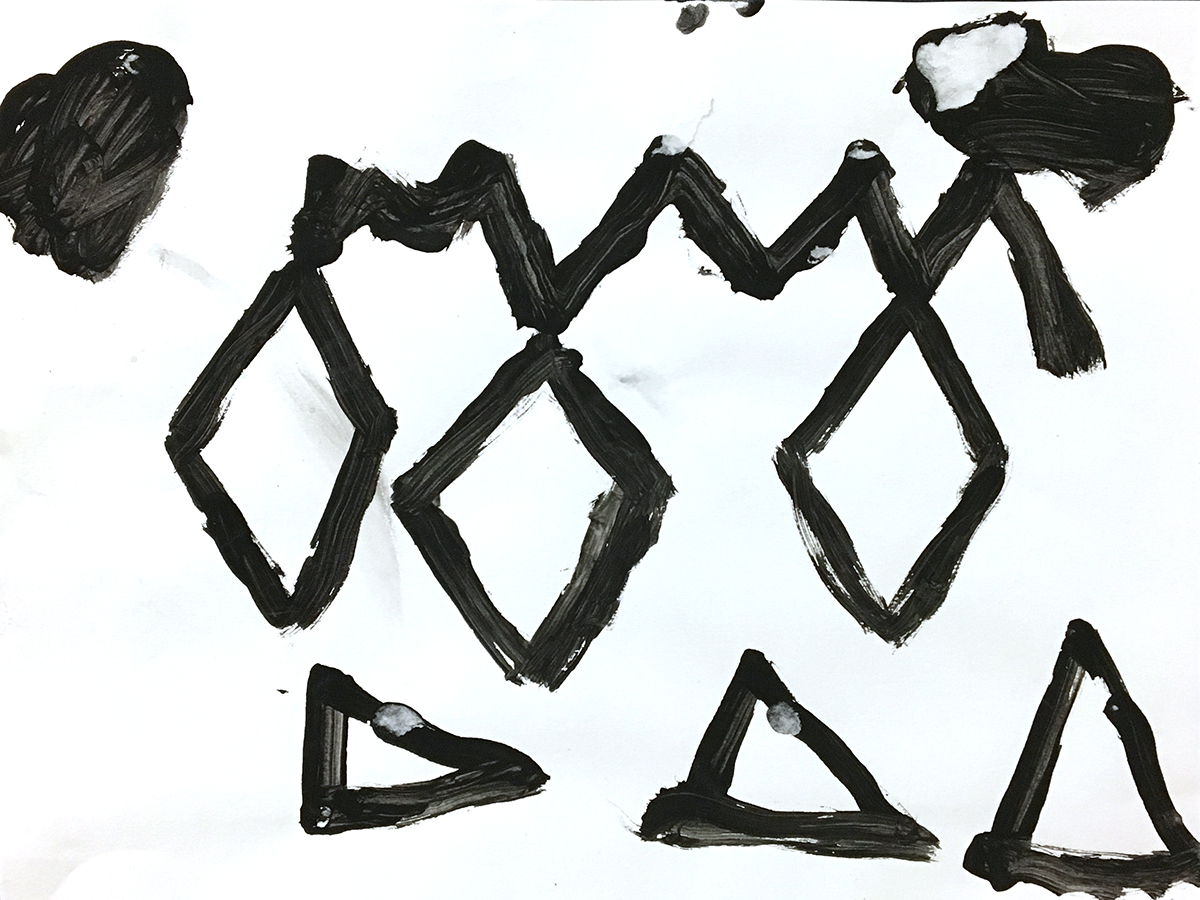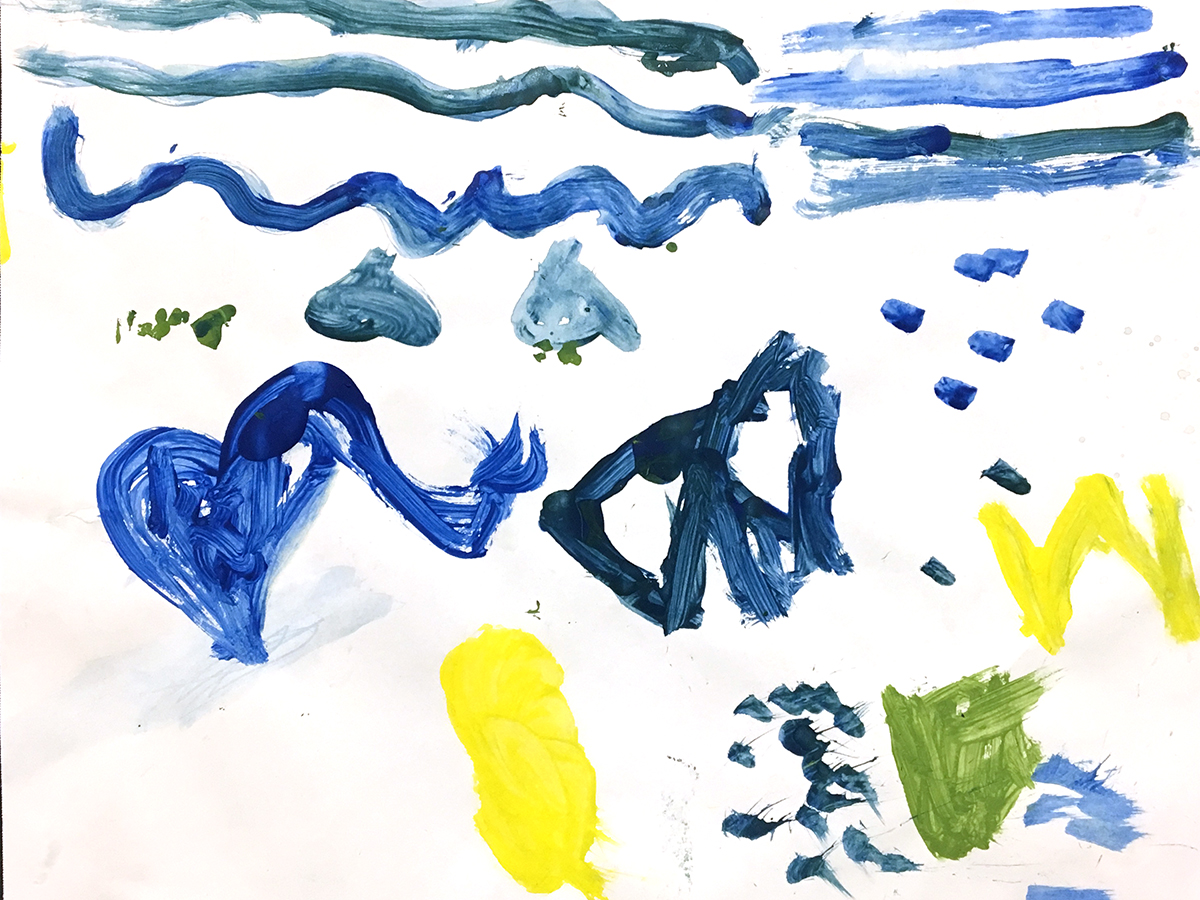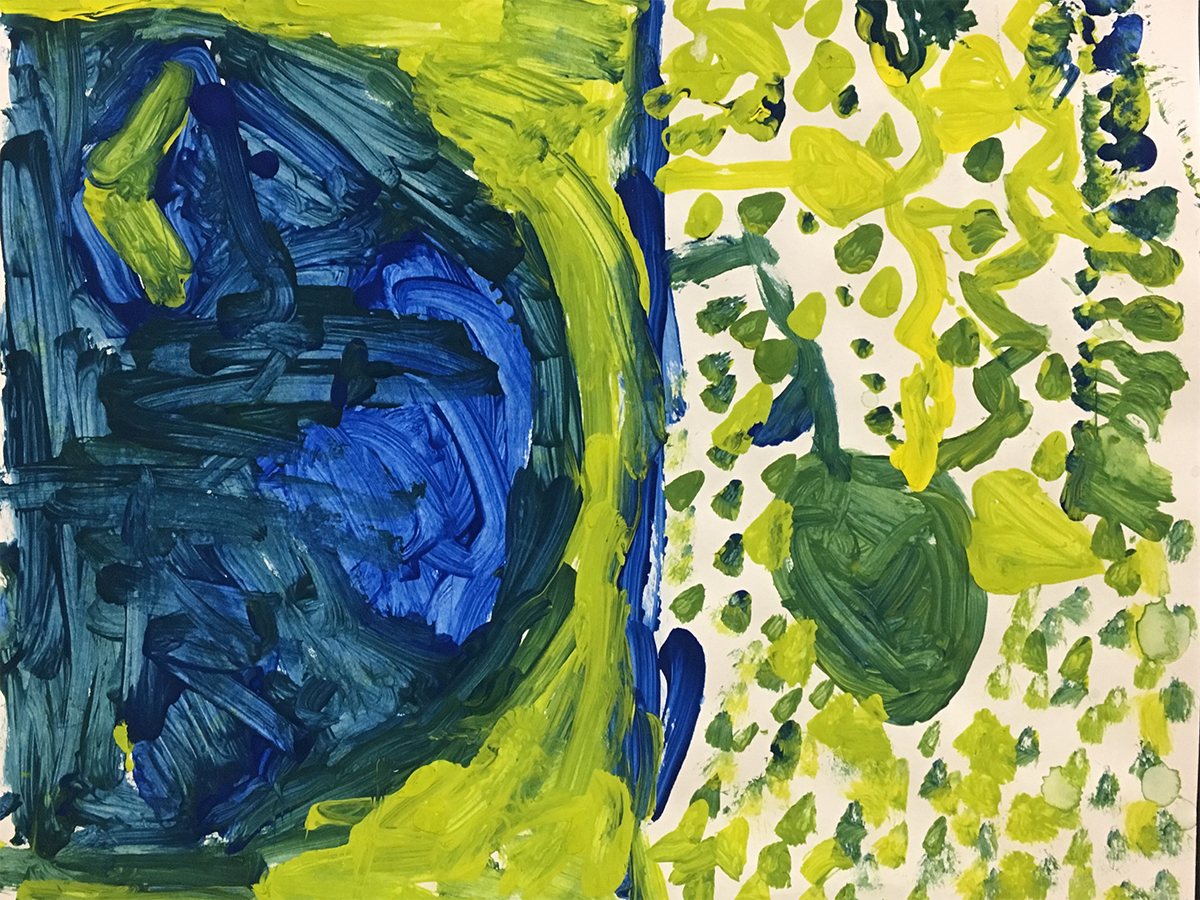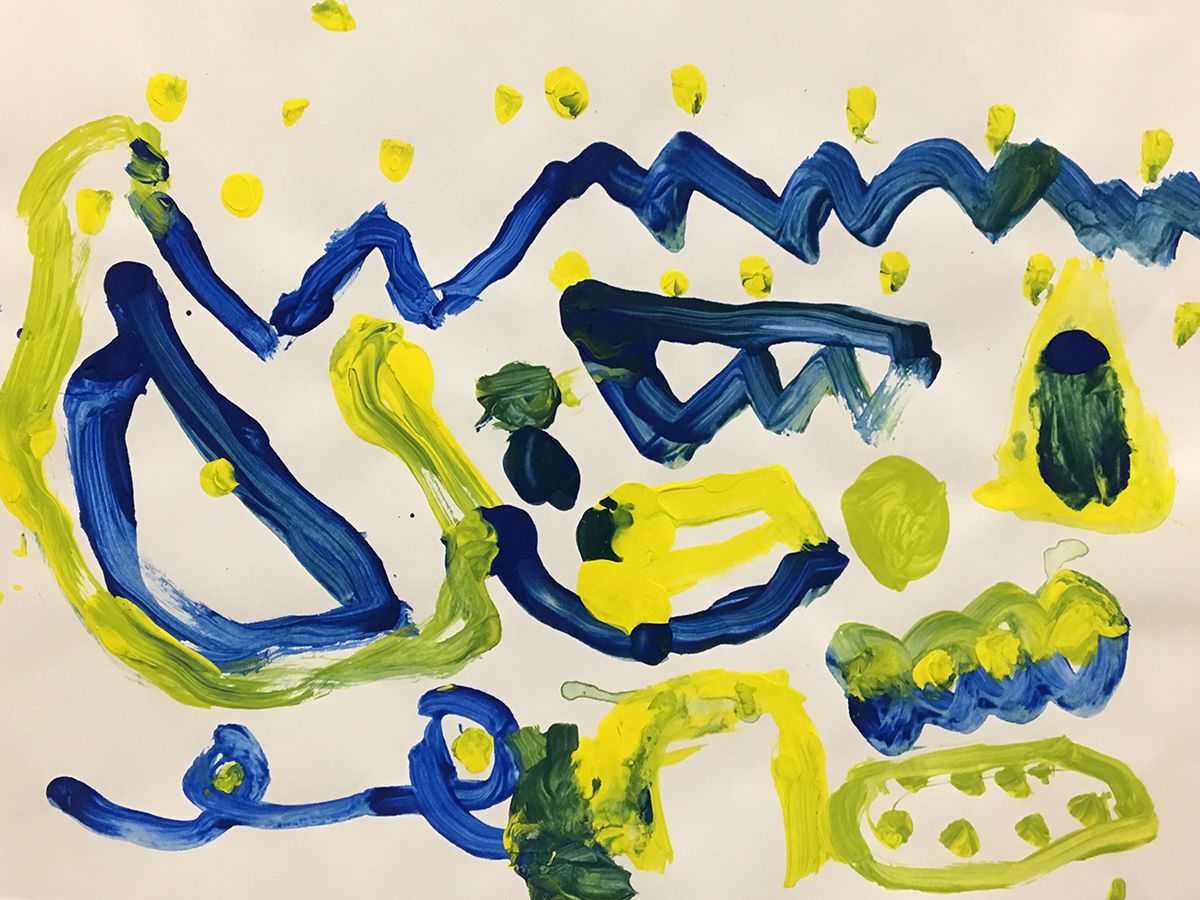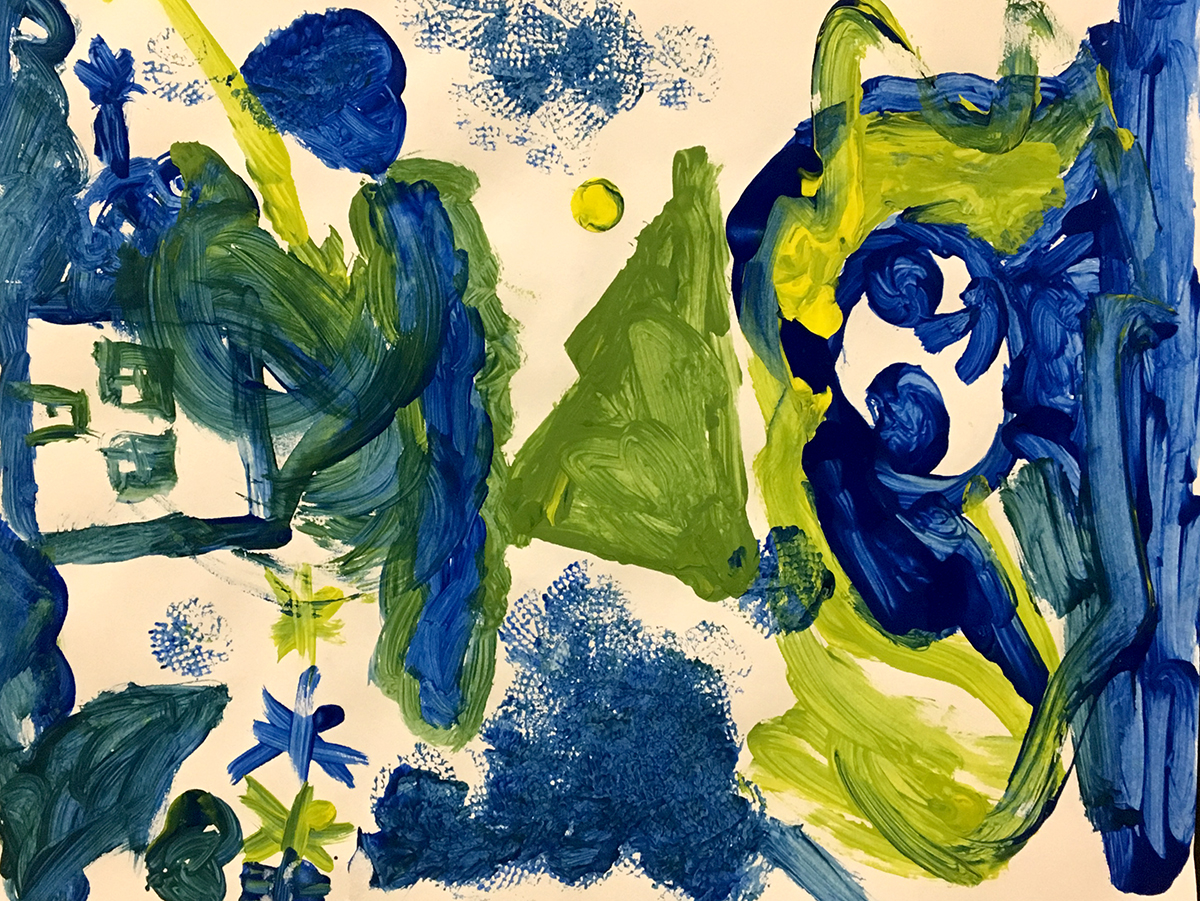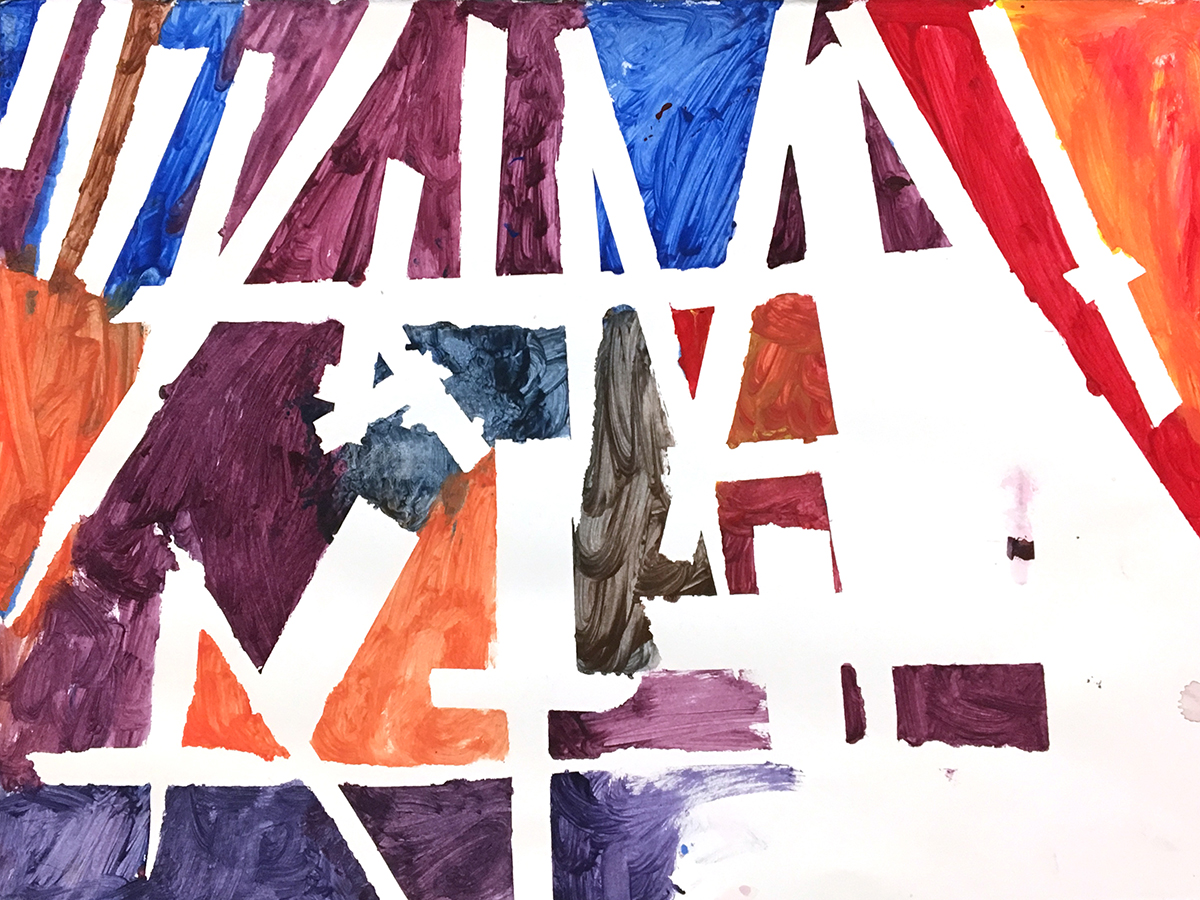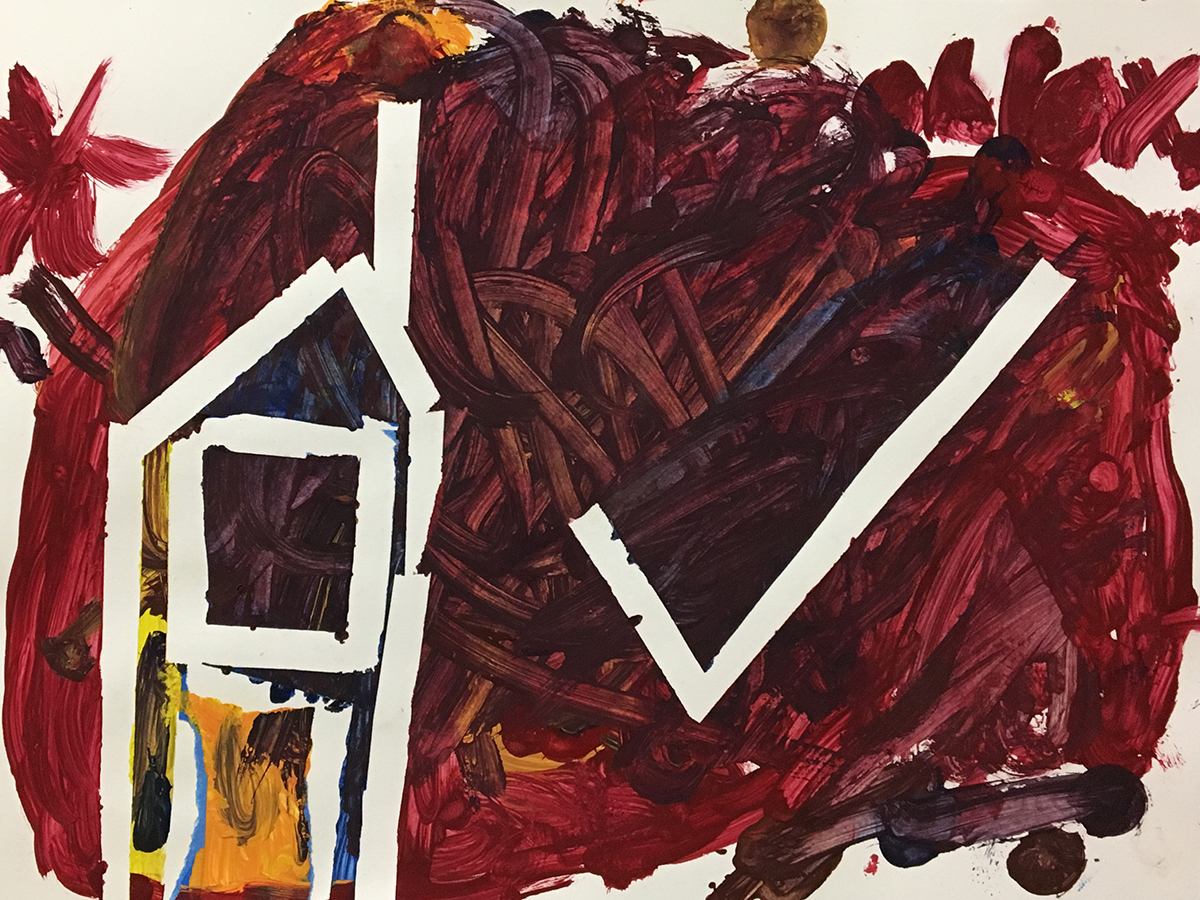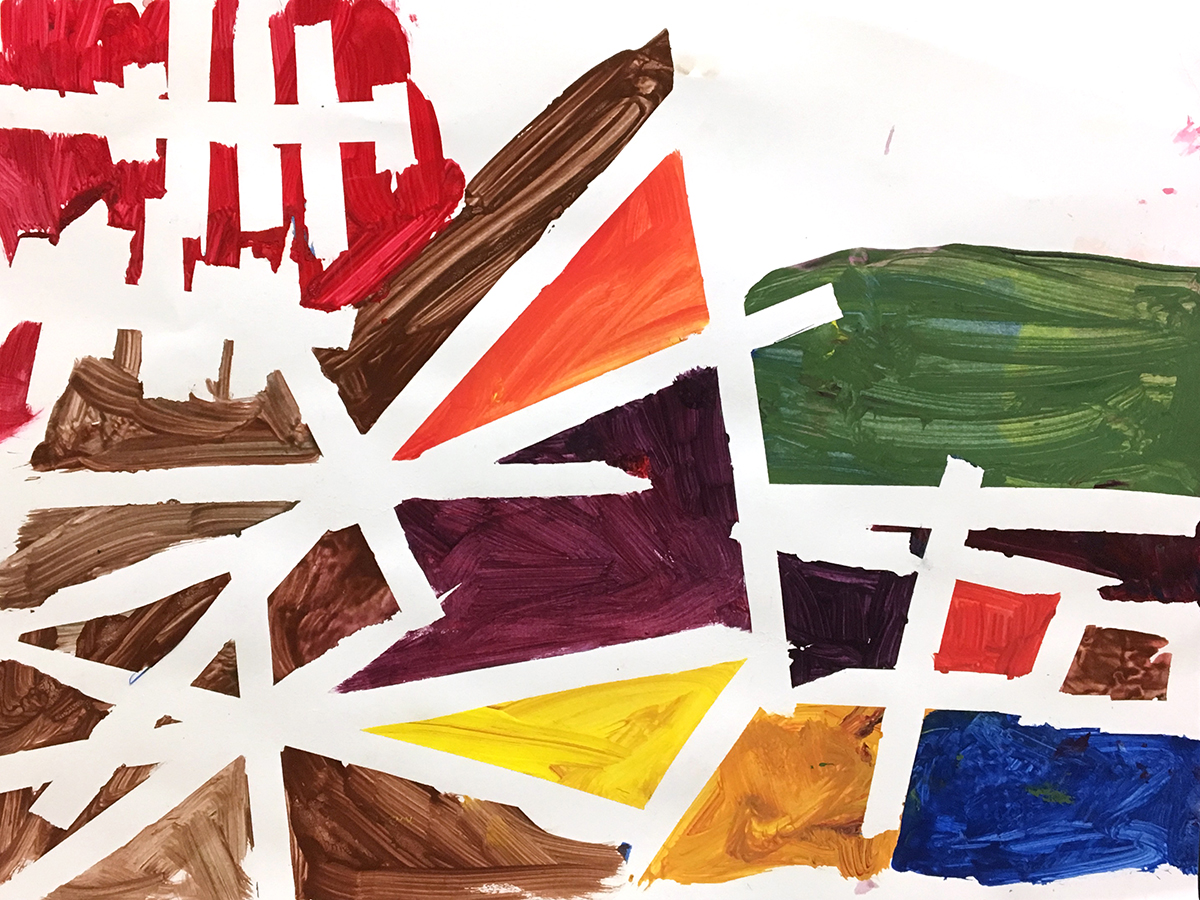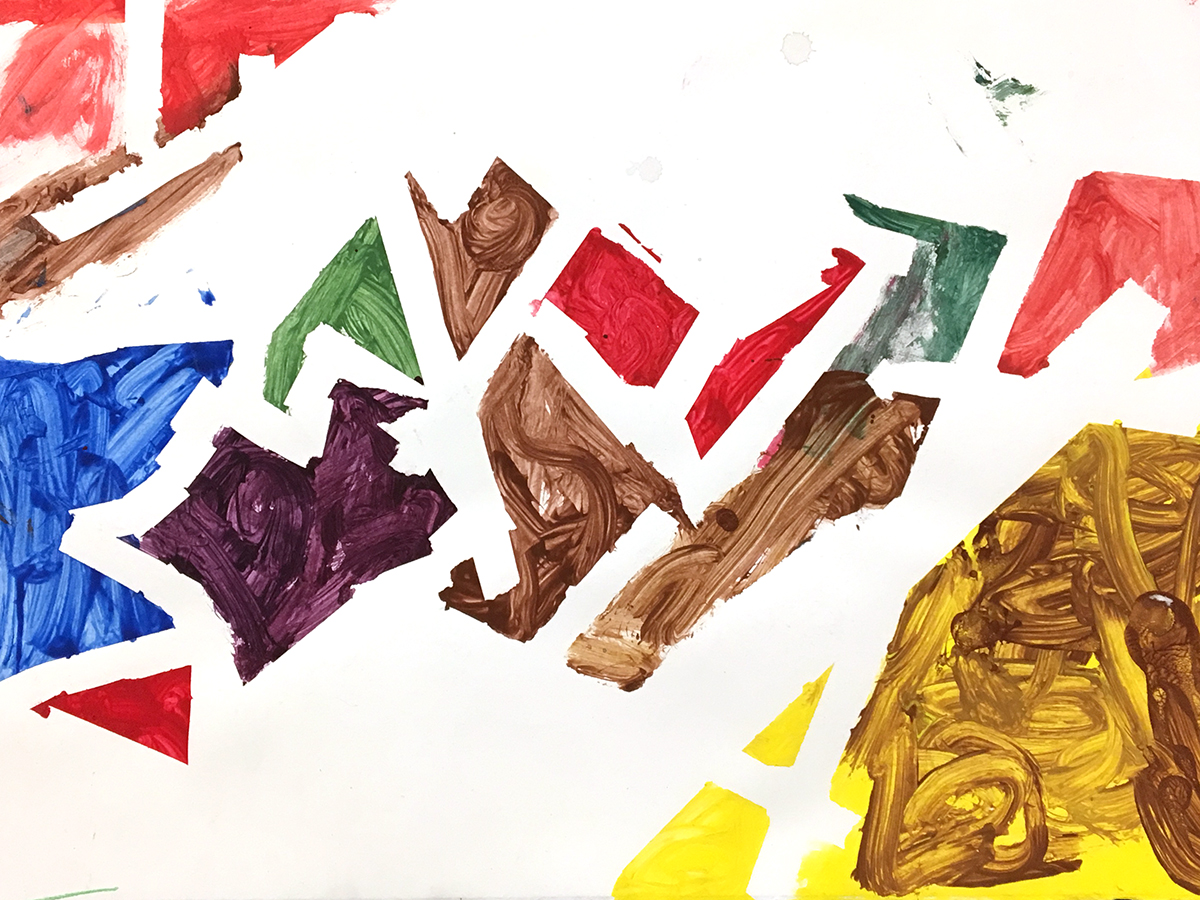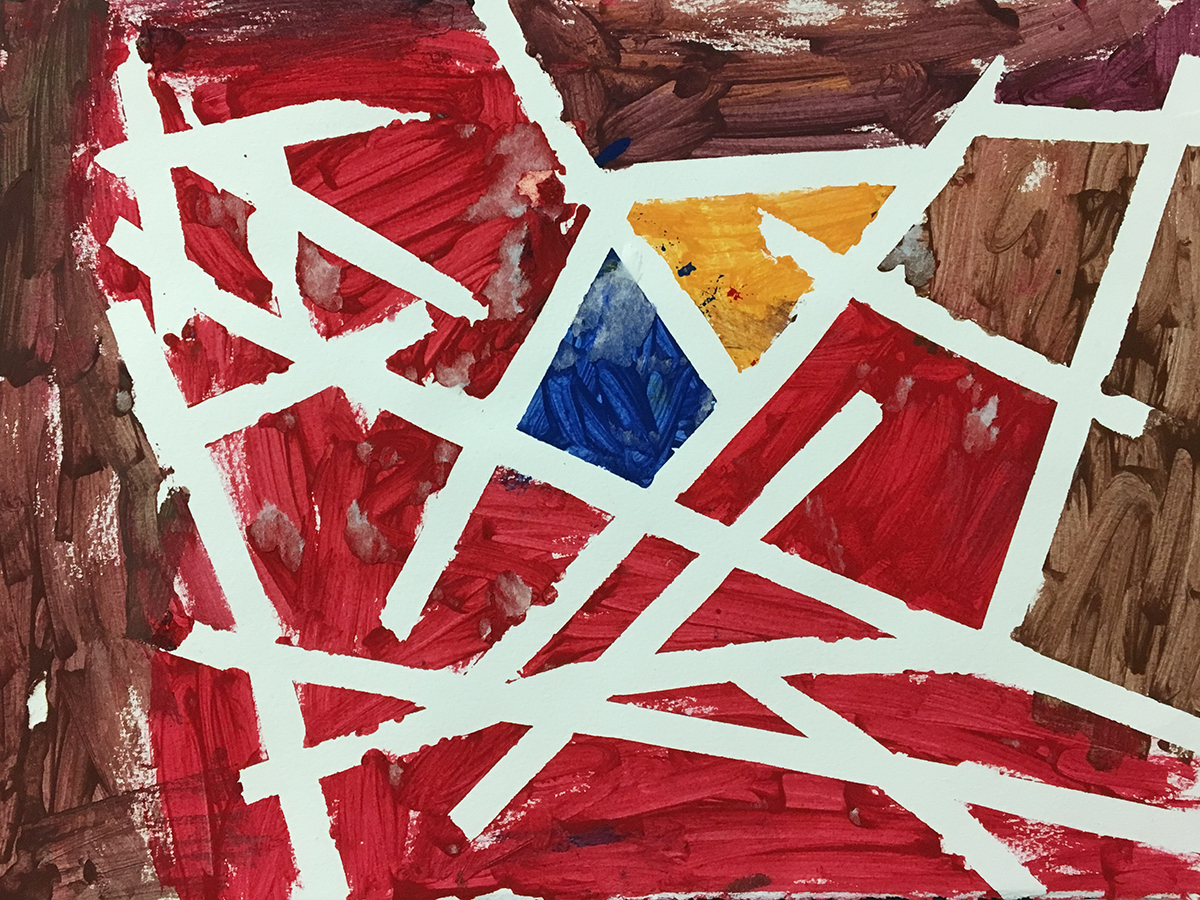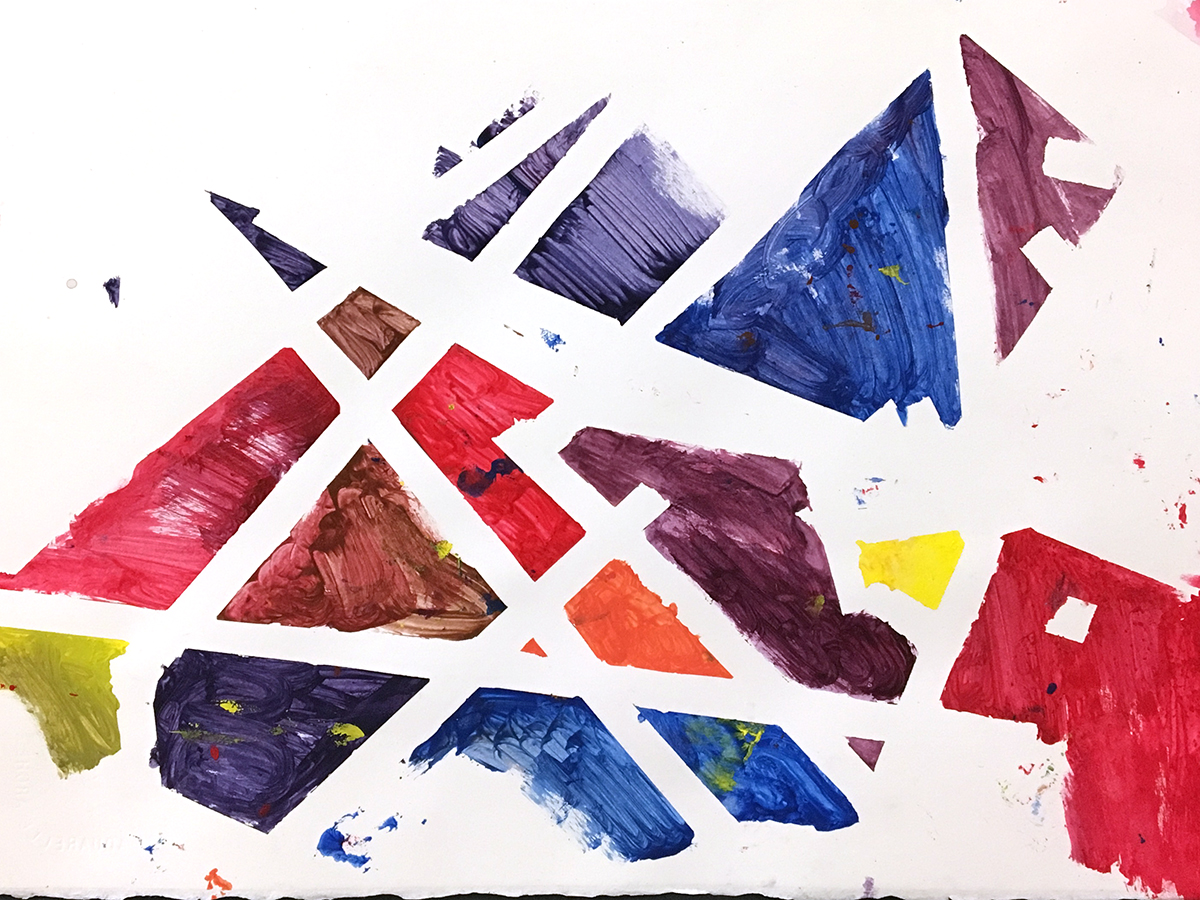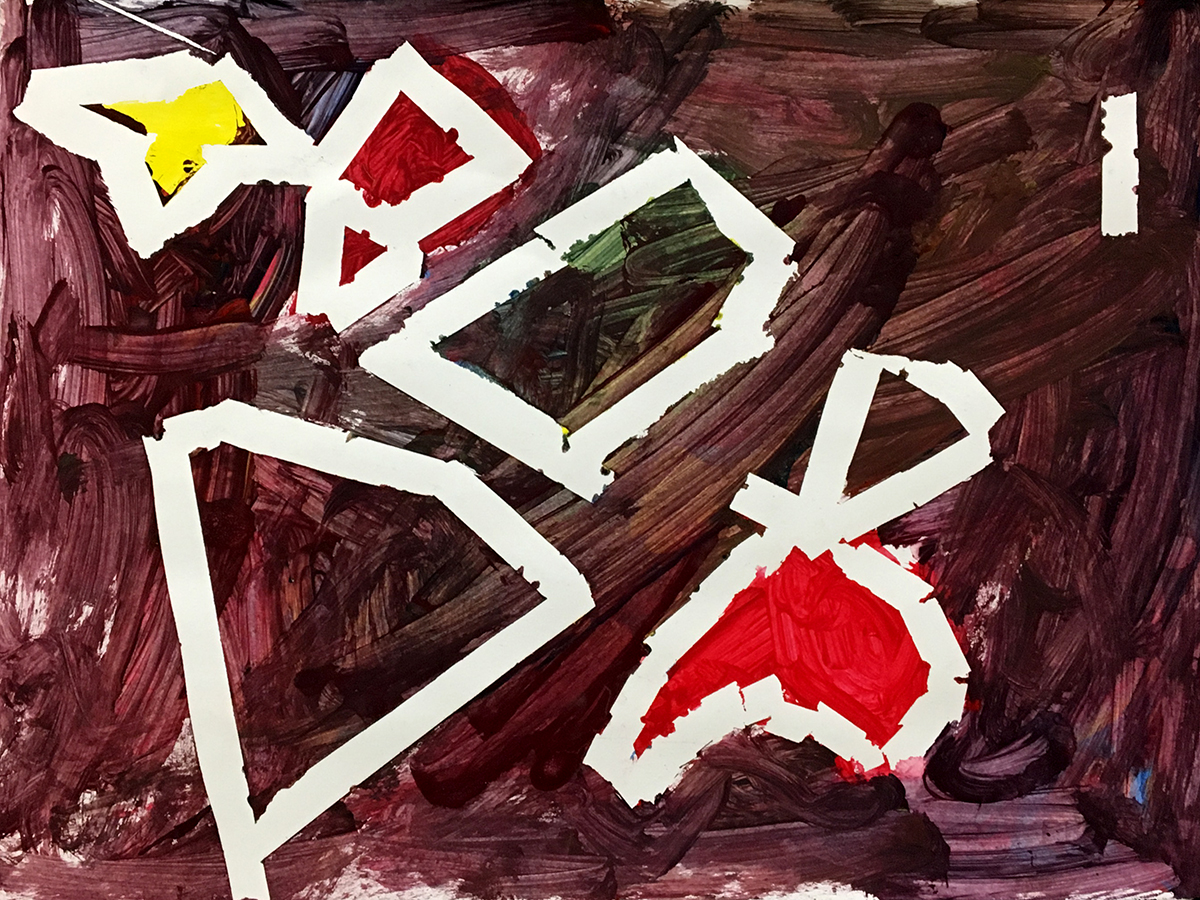Open Exploration
Learning to Work Together
Your side, my side, our side: Working in pairs with two primary colors offers students a chance to discover that collaboration can be fun.
First-grade students in Creative Art Works after-school program “Art Around the World” at PS 192 in Hamilton Heights learned about art from many different cultures, countries, and time periods. They also learned valuable academic and interpersonal skills, such as the value of experimenting and how to cooperate with your classmates.
In a unit inspired by Japanese sumi ink painting, these young artists learned to work collaboratively over the course of several days. Before her students began personal explorations using a brush, CAW Teaching Artist Laura Mychal took the time to discuss what the term “continuous” means, and to expand on the idea that there are many different types of continuous lines, such as straight, wavy, zig-zag or loopy. She also introduced the idea that continuous line could describe regular or irregular shapes. Students were then encouraged to experiment with their brushes using only black water color to see what happens when they applied different pressure on the brush or changed the ration of water to pigment.
Once the students were comfortable making their own marks, Laura paired them up with a partner. The students were given two primary colors — blue and yellow — but only one sheet of paper. Sitting across a table from each other, most students began by sticking to their half of the page, but over time, they discovered that collaboration mixing colors and working across the page could be fun.
For the final project in the sumi ink unit, the entire group created a single collaborative work on massive sheet of butcher paper. Students were free to roam around the table and add their designs wherever they wanted.
Crossing a line: Mixing blue and yellow to create green encourages students to let go of territorial tendencies.
“Kids at this age can be territorial about art materials. They think in terms of ‘my paper,’ and ‘my paint.’ So, when they are asked to share a single sheet of paper, their instinct is to draw a line down the middle and stick to their side. But when they discover that mixing their colors and joining their lines together can create something unexpected, they warm up to the idea of collaborating.”
The Value of Abstraction
This image contains a secret code. Stencil painting based on Ndebele House painting.
In the course of learning about art from different places and different cultures, students also began to expand their definition of what art is. A unit on stencil painting was inspired by the Ndebele women of South Africa and Botswana, who paint their homes in bright geometric patterns. These symbols contain secret codes that are understood only by members of the Ndebele nation. Laura introduced the idea of secret codes by discussing symbols such as hearts, stars, and the insignia that represent superheroes such as Batman and Captain America.
Students began by making stencil drawings using masking tape on paper. Next, they painted in the negative spaces between the tape. Finally, once the paint was dry, they peeled off the paint to reveal the final design. For the students, removing the tape was the most fun, because the final result was a surprise.
“As kids become more discerning, they start to define “good” art by how closely it resembles the real world; but you don’t achieve that sort of proficiency without years of practice. Working in abstractions helps students find the beauty in their own work. They become less focused on results and more excited by the process. ”
